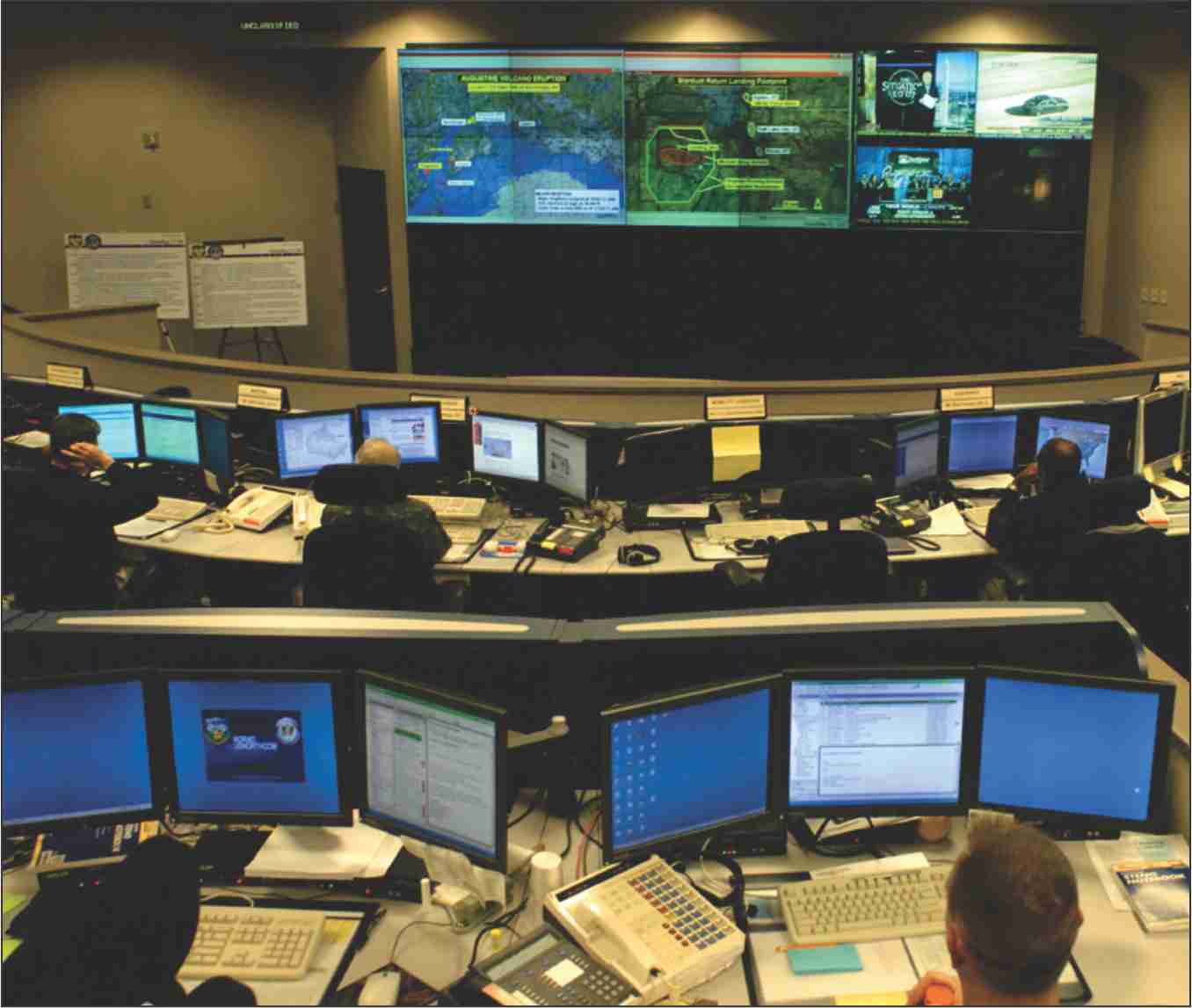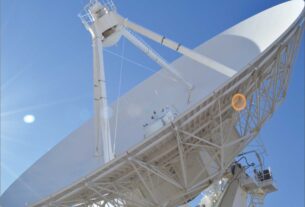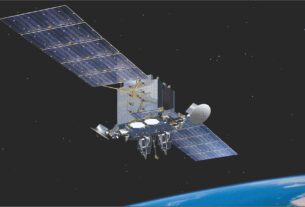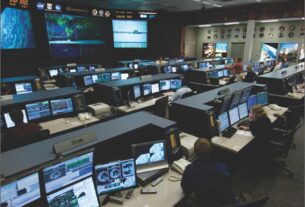Rapid advances in the technology of the versatile and multi-functional Electronic Warfare (EW) systems and devices have paved the way for an enhanced situational awareness and information dominance to stay ahead of the adversary in the thick of the battlefield.
Basically, EW strategy revolves round the exploitation of electro-magnetic spectrum or directed energy to control and manipulate the spectrum and take enemy by surprise.
While helping to stay at the winning edge of the battlefield, EW focusses on limiting and impeding the access of adversaries to the potentials of spectrum.
EW has been described as an integrated and composite defensive and offensive strategy based on the exploitation of electro-magnetic energy to detect, exploit, minimize or obviate the use of electro-magnetic spectrum by the adversaries.
Electronic measure
EW platforms can be based in air, on land and sea and could be both manned and unmanned devices. Warfare strategists explain that the mastery of EW techniques is critical for the successful implementation of the network centric warfare strategy.
On another front, EW is crucial for exploiting the full potentials of a well equipped, full fledgeda erospace command. What is more, with the ancient art of warfare spreading to outer space and cyber space, strategies for space war and cyber war have become an integral part of EW.
The three major components of EW strategy are: Passive Electronic Support Measures(ESM),Active Electronic Counter Measures(ECM) and anti ECM Electronic Counter-Counter Measures(ECCM).
Even as the researchers working onECM have helped build systems to provide jamming and decoy methods, technologists specializing in ECCM have facilitated the development of a range of equipment to overcome these methods. At the end of the day, EW strategy seems to be a continually evolving battle between various capabilities of ESM, ECM and ECCM.
The potentials of EW in realizing the strategic goals speedily and affordability was convincingly demonstrated by the sustained deployment of CIA of remotely operated, weaponized drones endowed with the faculties of intelligence and automation to pound the safe sanctuaries of radical Islamic groups and Taliban militia in the difficult to access mountainous stretches spread across Pakistan and Afghanistan.
Armed drones endowed with the faculty of intelligence, smartness, stealth and automation are now rapidly emerging as an inseparable part of EW strategy.
In the ultimate analysis, the key ingredients of a successful EW strategy include automation, intelligence, stealth, remote manipulation and unmanned surveillance.
The expanding frontiers of EW also draw heavily from the potentials of satellites, communications and information networks which pave way for the smooth integration of fighting platforms, command centres and defence forces spread over a large geographic swath.
Across the world, the potentials Electronic Warfare(EW)are beingharnessed for both the full fledged war and low intensity conflicts. In so far as the battlefield strategy is concerned, EW has been described as a ‘force multiplier’ and ‘game changer.’
The current thrust is on developing EW devices that are software intensive and fault tolerant besides being smart and lightweight with the new EW technique like anti-jamming taking a centre stage. And as part of the larger EW strategy, US has an integrated Cyber Warfare programme in place.
According to a report from Strategy Analytics, as the nations realize the growing need to have a strong digital warfare capabilities, global spend on the more advanced radio frequency EW systems is seen to hit US$9.3-billion by 2020.
Passive snooping
According to the former Indian President and also a well known space and defence scientist, Dr APJ Abdul Kalam “the EW system is a force multiplier which needs a high level of secrecy for maintaining surprise against adversary’s action.”
“In such a situation, it is essential that system design andarchitecture and development knowledge is generated within the country and maintained as a closely guarded information by services.”
Perhaps the biggest challenge in meeting the needs of the futuristic EW system lies in designing devices that are small in size and low in weight with small power consumption.
Clearly, the objectives of EW include jamming of enemycommunications channels and radars, mimicking and physical attack, deception which may be targeted at enemy groups, eavesdropping and obtaining operationally reliable information from enemies.
And the components of EW include protection against jamming through the hardening of the equipment to resist high power microwave attacks and the destruction of enemy jammers using anti radiation devices.
Indeed, real time information collection and timely and efficient sharing of data among the fighting platforms and defence forces cutting across the services jurisdiction and geographic spread are some of the critical factors shaping the contours of an EW.
Satellites, computers and communications networks that help in the seamless integration of fighting platforms, command centres and defence forces are all crucial for a successful net-centric warfare.
In what has been described as a boost to Indian EW efforts,a fully home-grown decoy device capable of diverting underwater torpedo attacks on ships and submarines has been developed jointly by Visakhapatnam based Naval Science and Technological Laboratory(NSTL) and Kochi based Naval Physical and Oceanographic Laboratory.
The torpedo defence system named Mareech has already been inducted into the Indian Navy. Mareech has been termed as a complete package involving sensors and decoys for defence against torpedo.
Mareech has been described asan excellent model of synergy between DRDO (Defence Research and Development Organisation), Indian Navy as well as public and private industries.
On the other hand, Mayavi electronic warfare suite designed and developed by Defence Avionics Research Establishment(DARE) and Bharat Electronics Limited(BEL) used in combat aircraft has many advantageous features.
Mayavi is designed to enhance survivability during deep penetration and actual combat. Mayavi includes a radar warning receiver, missile approach warning system, laser warning receiver system and infra red/ultra violet missile warning sensor as well as self protection jammer, chaff and flares, electronic counter measures suite and a towed radar decoy.
All said and done, India is yet to evolve a standard for EW. India started working on EW with the seriousness it deserves after the 1971 war with Pakistan that resulted in the birth of Bangladesh as an independent country.
Taking strides
The state owned defence enterprise BEL is today a leading centre of excellence for the development of EW systems in the country. BEL boasts of a sound research and development base for realizing EW devices.
According to SK Sharma, Chairman and Managing Director of BEL “we are strengthening our infrastructure in areas like night vision technology and elements of multi function radars, various new surface to air(SAM) missiles including quick reaction SAM, long range SAM, medium range SAM in addition network centric communications and electronic warfare programme.”
Work on setting up BEL’s new missile complex described as the largest Defence Systems’ Integration facility for missiles in the country at Palasamudram in Andhra Pradesh was inaugurated by the Defence Minister Manohar Parrikar in September last.
BEL is investing Rs.500crore on this new missile complex over the next three to four years. BEL currently manufactures the Akash surface to air missile designed and developed by Defence Research and Development Organisation (DRDO) for the Indian Air Force (IAF) and the Indian Army.
BEL is also in the process of setting a R&D centre in Bengaluru with an investment of Rs4,000-million to develop cutting edge technologiesfor creating products such as radars, missile electronics, electro-optics communications equipment C4ISR and night vision devices.
However, to sustain Indian supremacy in EW,ISRO(Indian Space Research Organisation) along with DRDO would need to build a strong space defence capability for electronic warfare.
India‘s fifth generation Advanced Medium Combat Aircraft(AMCA) being developed as a follow up to the home grown fourth generation supersonic fighter, LCA Tejas, will have a very small radar cross section to enhance stealth which happens to be one of the vital keys of EW strategy.
Its EW suite would include an AESA (Active Electronically Scanned Array) radar and IR(Infrared) search and track system. As it is, the EW system fitted on into Tejas includes a radar warning jammer, laser warning system, missile approach warner, emitter as well as a flare and dispenser.
In US, its naval force is in lead when it comes to developing and adopting electronic warfare strategies.
The daring accomplishment of Naval SEALs of the US National Special Warfare Development Group that led to the assassination of the most dreaded terrorist chief Osama Bin Laden in Pakistan’s garrison town of Abbottabad in May2011 stands out as a tribute to the marvels of EW.
“We have to be more mindful of how we operate in the electro-magnetic domain and in cyberspace and how those capabilities come together. We are working on better understanding of how networks and signals and networks and intelligence come together.”
“Integrated firing capabilities are a central part of the asymmetric advantages of our navy, joint and coalition forces bring to a fight. They include capabilities that disrupt adversary C4ISR systems, deliver electronic payloads that limit an enemy’s freedom of manoeuvres and action and enhance the ability of our own forces to place ordnance on targets,” writes Margaret Palmieri, Director of US Navy’s Integrated Fires Division in the July 2014 issue of US Naval Proceedings.
Meanwhile, there is a growing concern over Islamic outfits, radical groups and insurgents including ISIS in Middle East increasingly making use of EW devices.
Unfortunately, over the last couple of years, the region has seen a phenomenal growth in the use of advanced surface to air missiles from infra-red artillery-such as the heat guided missiles-to the more complex radio frequency gear like a radar guided missiles.
Russia, which is beefing up its defence capabilities by a substantial extent, is now focussing on giving a new edge to its EW strategy. Not surprisingly then the Russian army is known to have used its first ever set of multi functional electronic warfare system known as Borisoglebsk-2 during the conflict in Ukraine with a high degree of efficiency.
According to Russian army sources, “the Borisoglebsk-2 when compared to its predecessor has better technical characteristics, wider frequency bandwidth for conducting radar collection and jamming, faster scanning time of the frequency spectrum and higher precision while identifying the location and source of radar emissions and increased capability for suppression.”
A most recent study by Rand Corporation reveals that China’s military which has made great strides over the last two decades to modernize itself, however struggles to persist in several areas including its cyber warfare capabilities.
Rand researchers have found both organizational and technological shortcomings in PLA’s C4ISR systems that could hinder the speed, reliability and effectiveness of the military’s targeting capabilities.
Great vision
According to Rand study although most attention devoted to Chinese cyber activities focuses on Chinese cyber espionage and the theft of intellectual property, China remains potentially vulnerable to enemy cyber actions.
By all means, high performance satellites meant for a variety of end uses could be a major game changer for the defence forces keen on boosting the prospect of EW battlefield strategy.
Weather watch satellites providing forecast of climatic conditions that facilitate bombing raids and missile launches, navigation satellites guiding lethal weapons to designated locations, reconnaissance satellites locating the exact geographical position of military targets, electronic ferret satellites collecting data on radio frequencies, communications satellites providing real time secure links between defence forces scattered over a vast geographical swathe for a co-ordinated strategy and ocean watch satellites snooping on the naval movement of adversaries, have all become puppets on a string of modern day warfare with a strong focus on EW battlefield strategy.
Since space assets have become an integral part of the battlefield strategy involving electronic devices, control of outer space is as critical as the control of high seas and the air space in so far as establishing the battlefield supremacy is concerned.
For the successful accomplishment of EW battlefield strategy, satellites acting as ‘eyes’ and ‘ears’ in outer space hold the key. In this context, there is a growing clamour to design, develop and deploy devices meant to disable satellites in outer space.
For instance, in early 2007, China stunned the world by making use of a ground based medium range ballistic missile to smash an ageing weather watch satellite parked in middle earth orbit.
According to western space analysts, this was the first demonstration of China’s well thought out plan to perfect a satellite kill weapon as a prelude to preparing the ground for meeting the challenges of a fullfledged war in space.
The kinetic energy weapon deployed by China to destroy its aging satellite was a primitive anddetectable anti satellite system. Evidently, a kinetic energy weapon made up of a kill vehicle in the form of a missile and a weapon control system is only one part of the arsenal.
Alternate modes of attack include the deployment of high energy systems including lasers and electro magnetic pulses that can disable or destroy a satellite.
Capability boost
Of course, China has started experimenting with laser beams with a view to fashion a weapon capable of disabling an enemy satellite. Imaging surveillance satellites are particularly vulnerable to lasers as their function depends on devices which are sensitive to light.
However, the space based laser weapons are yet to become a reality. Apparently, right at the moment, there are no operational laser weapons in use.
On another front, there is an increasing focus on using high energy beam weapons fashioned out of sub-atomic particles. The beam weapons are activated by accelerating subatomic particles to high velocities.
But one hitch is that the charged sub-atomic particles are subject to bending effects of the magnetic field. This implies that these particles would need to be rendered electrically neutral to be effective.
This weapon, when realized, could be used with far more frightening effectthan the laser based destructive devise. Of course, right at the moment this radical weapon is still in the realm of theoretical possibility.
Along with outer space, cyber space has emerged as the latest domain of warfare. As cyber communications continues to be in a state of infancy and gradual evolution, there is no fool proof firewall to ensure the security of computer networks.
Clearly, hackers always manage to stay ahead of the security devices engineered to ensure the safety of information networks. By paralysing the enemy through an attack on his infrastructure and utilities as well as the financial nerve centres, half of the battle can be won at a very negligible cost and without any elaborate preparations normally associated with a conventional war.
A cyber war can instantly cripple a nation without a single shot being fired at the enemy. Stealth and anonymity are perhaps the biggest warfare experts believe that the cyber attacks based on malicious worms could very well change the contours of warfare in the not too distant a future advantages associated with cyber war where the invader remains undetected.
By all means, the stunning and crippling effect of cyber invasion could be a nightmare for security agencies and military establishment as cyber warriors remain “borderless and impersonal” entities.
Apparently, cyber invaders have no physical boundaries to negotiate while giving a practical shape to their evil designs. What is more, even satellites designed for communications, navigation, earth observation and many other end uses can be paralysed and put out of commission through the manipulation and degradation of their software.
Even the mighty Pentagon has found it difficult to ward off cyber attacks. Sometime back, following the detection of suspicious activities Pentagon was forced to take offline its e-mail network used by both the military and civilian staff.
On its part, US military’s cyber command is investigating the matter. In a revelation, the Federal Bureau of Investigation(FBI) has said that US has seen 53 per cent increase in cyber espionage cases for economic gain or theft of trade secrets resulting in the loss of hundreds of billions of dollars.
Most of the cyber hacking cases are said to be master minded by China based cyber warriors. According to Randall Coleman, an FBI official, the state sanctioned corporate theft by China is at the core of the problem.
Even so, China has denied any involvement in hacking into foreign network systems. Du Pont, Lockheed Martin and Valspar are among the leading corporates in USA which have reported cyber theft of classified data.
With the cyber space all set to become the fifth dimension of the warfare, countries around the world are busy preparing to face the threat of cyber war where attackers remain incognito.
By all means, the stunning and crippling effect of cyber invasion could be a nightmare for security agencies and military establishments as cyberspace remains a borderless and impersonal entity.
Visualizing threat
Indeed, cyber spies have no physical boundaries to negotiate while giving a practical shape to their “evil designs”. What is more, even satellites designed for communications, navigation, earth observation and many other end uses could be paralysed and put out of commission through the manipulation and degradation of its software.
As it is, the detection of a threat or a potential threat plays a major role in ensuring cyber security. No formal rules of engagement in cyber warfare exist at present at both international as well as multi- lateral levels.
In the context of China’s People’s Liberation Army(PLA) preparing in a big way for the cyber warfare, Indian military establishment has every reason to set up a Cyber Command even as the formation of a tri service aerospace command awaits the approval of the Indian Government.
Many countries have already set up cyber commands as part of their defence establishment. Of course, Indian defence set up should put in place, a well equipped Cyber Command by taking into account its own threat perception and futuristic developments in cyber warfare strategy.
Meanwhile, India’s Ministry of Defence(MoD) as part of the move to prevent cyber espionage has restricted the use of internet on official networks. MoD has already sounded alarm over the move of some foreign intelligent agents to gather top secret information from the Indian defence personnel privy to classified information.
The grim ground reality is that the rapidly evolving EW has now become an integral part of the warfare games in both the outer space and cyberspace from being once a part of the warfare fought on land, high seas and air.
Indeed, a digitized battlefield strategy highlighted by information superiority and an enhanced situational awareness will continue to acquire momentum in step with the strides in the technology of Electronic Warfare.
There is no denying the point that the EW battlefield strategy is the future of the ancient art of warfare.





